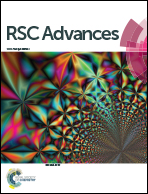Reduction of Escherichia coli O157:H7 and naturally present microbes on fresh-cut lettuce using lactic acid and aqueous ozone
Abstract
Lactic acid (LA) is an effective sanitizer for disinfection of fresh produce. Tap water is generally used to wash disinfected fresh produce because sanitizer residues negatively affect the quality and organoleptic properties of the produce. However, tap water is ineffective for secondary disinfection compared with sanitizers. Thus, we propose a disinfection method using LA plus aqueous ozone (AO), an oxidizing sanitizer that does not lead to secondary residue. We compared the proposed method of 1% LA (90 s) plus 1 mg L−1 AO (30 s) or 2 mg L−1 AO (30 s) with the traditional method of 100 ppm chlorine (120 s) or 1% LA (120 s) plus tap water (30 s) and 2 mg L−1 AO (150 s). Microbial analysis showed that LA plus AO led to the greatest reductions in microbes (Escherichia coli O157:H7, aerobic mesophilic counts, aerobic psychrophilic counts, moulds, and yeasts) during storage (0–5 days at 5 °C). Quality analysis (colour, sensory qualities, electrolyte leakage, polyphenolic content, and weight loss) showed that LA + AO did not cause additional quality loss compared with tap water treatment. These results indicate that the hurdle technology proposed (LA plus AO) has a good potential for use in fresh produce disinfection.



 Please wait while we load your content...
Please wait while we load your content...